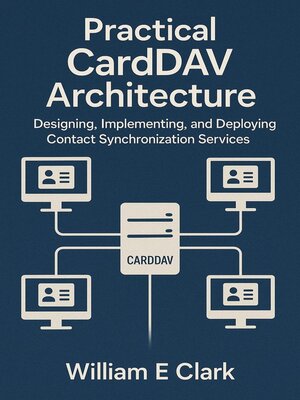Practical CardDAV Architecture
ebook ∣ Designing, Implementing, and Deploying Contact Synchronization Services
By William E. Clark

Sign up to save your library
With an OverDrive account, you can save your favorite libraries for at-a-glance information about availability. Find out more about OverDrive accounts.
Find this title in Libby, the library reading app by OverDrive.



Search for a digital library with this title
Title found at these libraries:
| Library Name | Distance |
|---|---|
| Loading... |
Practical CardDAV Architecture: Designing, Implementing, and Deploying Contact Synchronization Services is a hands-on, authoritative guide to building resilient contact synchronization systems with CardDAV. Rooted in the protocol's history and core standards, the book explains CardDAV's relationship to WebDAV and CalDAV, its RESTful design principles, and the key RFCs and conceptual models that define modern address-book interoperability. Readers gain a clear, practical vocabulary and architectural perspective for designing solutions that meet real-world requirements.
The book dives into the technical heart of CardDAV: vCard data modeling, resource architecture, discovery and lookup, synchronization strategies (including sync-token and change propagation patterns), and the design of robust extension and namespace mechanisms. It covers essential operational concerns—authentication and authorization, encryption, quota and error handling, compliance, and secure extension patterns—alongside detailed implementation guidance for storage backends, client and server architectures, scalability, high availability, and performance engineering for large-scale deployments.
Emphasizing interoperability and production readiness, the book provides concrete methods for automated testing, standards conformance, cross-implementation compatibility, and vendor-specific customization. Operational chapters walk through deployment best practices, monitoring, disaster recovery, and incident management, while forward-looking sections survey ecosystem trends and emergent community standards. Designed for engineers, architects, and technical leaders, this pragmatic resource takes readers from protocol fundamentals to building and operating production-grade CardDAV services.







